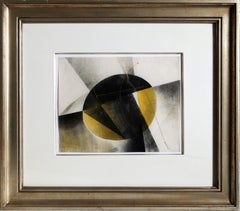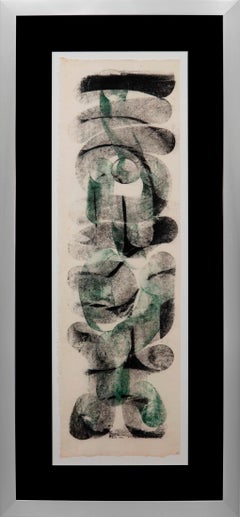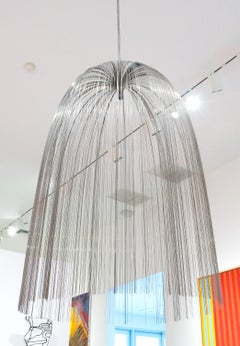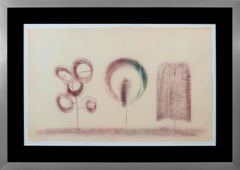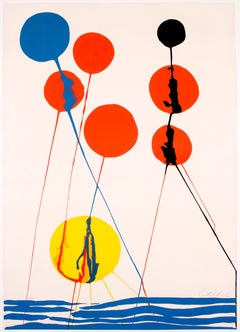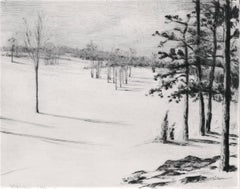Harry Bertoia Art
Sculptor, furniture and jewelry designer, graphic artist and metalsmith, Harry Bertoia was one of the great cross-disciplinarians of 20th-century art and design and a central figure in American mid-century modernism. Among furniture aficionados, Bertoia is known for his chairs such as the wire-lattice Diamond chair (and its variants such as the tall-backed Bird chair) designed for Knoll Inc. and first released in 1952.
As an artist, he is revered for a style that was his alone. Bertoia’s metal sculptures are by turns expressive and austere, powerful and subtle, intimate in scale and monumental. All embody a tension between the intricacy and precision of Bertoia’s forms and the raw strength of his materials: steel, brass, bronze and copper.
Fortune seemed to guide Bertoia’s artistic development. Born in northeastern Italy, Bertoia immigrated to the United States at age 15, joining an older brother in Detroit. He studied drawing and metalworking in the gifted student program at Cass Technical High School. Recognition led to awards that culminated, in 1937, in a teaching scholarship to attend the Cranbrook Academy of Art in suburban Bloomfield Hills, one of the great crucibles of modernism in America.
At Cranbrook, Bertoia made friendships — with architect Eero Saarinen, designers Charles and Ray Eames and Florence Schust Knoll and others — that shaped the course of his life. He taught metalworking at the school, and when materials rationing during World War II limited the availability of metals, Bertoia focused on jewelry design. He also experimented with monotype printmaking, and 19 of his earliest efforts were bought by the Guggenheim Museum.
In 1943, he left Cranbrook to work in California with the Eameses, helping them develop their now-famed plywood furniture. (Bertoia received scant credit.) Late in that decade, Florence and Hans Knoll persuaded him to move east and join Knoll Inc. His chairs became and remain perennial bestsellers. Royalties allowed Bertoia to devote himself full-time to metal sculpture, a medium he began to explore in earnest in 1947.
By the early 1950s Bertoia was receiving commissions for large-scale works from architects — the first came via Saarinen — as he refined his aesthetic vocabulary into two distinct skeins. One comprises his “sounding sculptures” — gongs and “Sonambient” groupings of rods that strike together and chime when touched by hand or by the wind. The other genre encompasses Bertoia’s naturalistic works: abstract sculptures that suggest bushes, flower petals, leaves, dandelions or sprays of grass.
As you will see on these pages, Harry Bertoia was truly unique; his art and designs manifest a wholly singular combination of delicacy and strength.
Find vintage Harry Bertoia sculptures, armchairs, benches and other furniture and art on 1stDibs.
1960s American Modern Harry Bertoia Art
Monotype
1960s Abstract Harry Bertoia Art
Brass, Steel
Mid-20th Century Abstract Harry Bertoia Art
Monoprint
20th Century Abstract Harry Bertoia Art
Paper, Monoprint
1960s Post-War Harry Bertoia Art
Steel, Wire
20th Century Abstract Harry Bertoia Art
Monoprint
1970s Abstract Harry Bertoia Art
Bronze, Steel
20th Century Abstract Harry Bertoia Art
Steel
1940s Abstract Harry Bertoia Art
Monoprint
1940s Abstract Harry Bertoia Art
Monoprint
Mid-20th Century Abstract Harry Bertoia Art
Monoprint
1970s American Modern Harry Bertoia Art
Lithograph
Early 20th Century American Modern Harry Bertoia Art
Drypoint, Etching
1960s Abstract Geometric Harry Bertoia Art
Monoprint, Monotype
Mid-20th Century American Modern Harry Bertoia Art
Etching, Aquatint
2010s Abstract Harry Bertoia Art
Steel, Wire
1990s Abstract Expressionist Harry Bertoia Art
Monotype, Monoprint
20th Century Abstract Harry Bertoia Art
Brass, Steel
1990s Abstract Expressionist Harry Bertoia Art
Monoprint, Monotype
20th Century Abstract Harry Bertoia Art
Steel
1920s American Modern Harry Bertoia Art
Drypoint
1930s American Modern Harry Bertoia Art
Drypoint, Etching
2010s Contemporary Harry Bertoia Art
Wire, Steel, Copper, Brass
1940s American Modern Harry Bertoia Art
Monoprint
20th Century Abstract Harry Bertoia Art
Oil
Harry Bertoia art for sale on 1stDibs.
Artists Similar to Harry Bertoia
- 1stDibs ExpertApril 5, 2022Whether or not a Harry Bertoia chair is comfortable really comes down to a matter of personal preference, but there are a lot of positive reviews pertaining to how comfortable the Italian-born American designer’s seating is. Among furniture aficionados he is known for the wire-lattice Diamond chair (and its variants such as the tall-backed Bird chair) designed for Knoll Inc. and first released in 1952. Shop a selection of Bertoia chairs from some of the world’s top dealers on 1stDibs.

